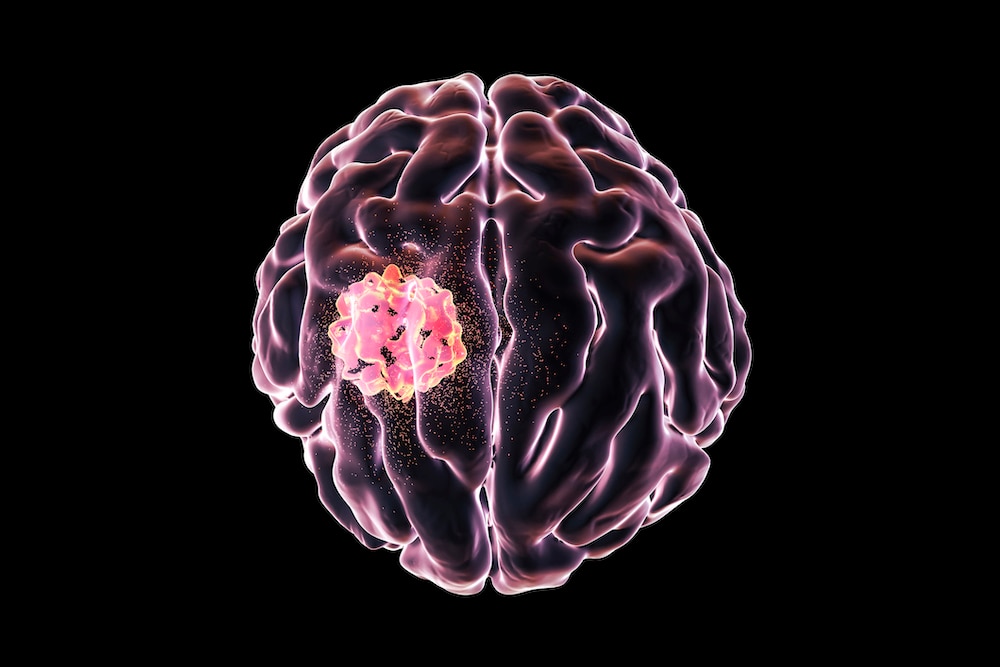Create a free profile to get unlimited access to exclusive videos, sweepstakes, and more!
Enacting siege warfare to successfully starve and kill brain tumors
If you can't win a fair fight, don't fight fair.

In the movie 50/50 (now streaming on Peacock), Adam Lerner, played by Joseph Gordon-Levitt, is diagnosed with a tumor and given 50% odds of recovery. Those odds are bad enough, but some forms of cancer, like those which affect the brain, come with even slimmer chances.
Medical science has been engaged in all out warfare with cancer for centuries. It’s a terrible disease which utilizes myriad strategies for evading our defenses, both innate and scientific. While we’ve developed tools for effectively combatting some forms of cancer, others remain difficult to attack. Glioblastoma, for instance, has an average 5-year survival rate of just 6% and doesn’t readily respond to our current slate of treatments or therapies. Getting our figurative hands around it will require new therapeutic weapons and new strategies of attack. Now, scientists at Tel Aviv University, and colleagues, may have developed a new weapon of cancerous mass destruction which effectively wipes out glioblastoma.
Historically, siege warfare tactics work by cutting off a city or encampment from necessary resources. Rather than taking the fight directly to your foe, you simply preclude them from access to food, water, or reinforcements until they give up or die out on their own. It’s a particularly gruesome form of engagement, but it might be an effective strategy for fighting some cancers. The new study, published in the journal Brain, utilizes something akin to siege warfare to starve brain tumors by cutting them off from the resources they need to survive and grow.
The team realized that glioblastoma tumors need two primary ingredients in order to survive: energy and defense. Both of those resources are funneled to them by a type of brain cell known as astrocytes. While astrocytes ordinarily support normal brain functions, they appear to get confused in the presence of a glioblastoma tumor. They gather immune cells to the site but instead of using those cells to fight off the cancer, their orders get mixed up and immune cells start to protect the malignant tissues. Meanwhile, astrocytes ramp up production of cholesterol and funnel its energy to the tumor, allowing it to grow rapidly. With a steady supply of energy and an active defense force, there’s nothing stopping the tumor from growing and causing increasing damage. Luckily, the astrocytes provide a single point of failure which scientists were able to exploit.
Instead of attacking the tumor directly, researchers designed a process by which they could chip away at the tumor’s astrocyte support system. Effectively, they built up a barrier around the tumor, cutting it off from the resource pipeline it needs.
In experiments with animals, glioblastoma typically kills the animal in as little as four to five weeks when left untreated. However, when scientists engineered the astrocytes so that they stopped producing a transport protein, things changed quickly and dramatically. Without the transport protein, astrocytes stopped funneling cholesterol to the tumor and it starved to death in a matter of days.
Glioblastomas are gluttons and that’s their biggest weakness. In every treated animal, the tumor disappeared, and most didn’t return even after treatment was ended. Moreover, the process also worked in extracted samples taken from human patients. This process is also supported by an analysis of records from glioblastoma patients. The researchers found that individuals with lower levels of gene expression related to the immune response and cholesterol delivery tended to live longer. This new therapy essentially takes those findings and makes them intentional.
Importantly, however, we don’t currently have ways to eliminate or modify the astrocytes surrounding glioblastomas in human patients. Scientists are working to develop new drugs which can deliver this new siege tactic in people.
This isn’t an immediate solution for existing patients but, at least, we have a new strategy. Now, we just need a way to get on the battlefield.


























